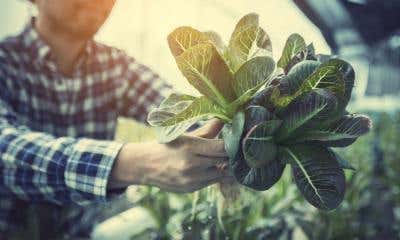Maximizing Your Tomato Yield: A Comprehensive Guide to Crop Manipulation
If you've ever found yourself questioning why your tomato plants aren't reaching their potential, you're not alone. Tomato growers, both amateur and professional, frequently confront this conundrum. With the right techniques and some well-placed attention, you can elevate your tomato game to new heights. Based on the insightful information presented on Maximum Yield's blog, this article will offer an in-depth exploration of seven critical crop manipulation strategies to improve your tomato yield.
1. Understand the Importance of Pruning
Tomato plants, like all living things, have energy limits. If you don't intervene, a tomato plant will spread its energy across all its shoots, potentially weakening the plant overall. That's where pruning comes in, acting as a resource allocation tool. By removing unnecessary branches, you focus the plant's resources on fruit production. Remember, the key is balance - too much pruning can also reduce yield. Regularly inspect your plants and make smart pruning decisions to enhance fruit development.
2. Master the Art of Training
"What exactly does 'training' a plant mean?" you might ask. This process involves manipulating the plant's physical structure to optimize light exposure and airflow. Common methods include trellising and staking. Trellising is an excellent way to guide vine growth upwards, promoting better fruit development and reducing disease incidence. It’s like giving your tomatoes a gym membership—they’ll become stronger, healthier, and more productive.
3. Promote Cross-Pollination
Although tomatoes are self-pollinating, promoting cross-pollination can improve fruit set and quality. This is where the birds and the bees come in. But you can also play matchmaker by gently shaking the plant to distribute pollen, or employing pollinators like bees and bumblebees. It's like hosting a party where everyone brings something to the table, resulting in a bountiful feast—of tomatoes!
4. Regulate Fertilizer and Water
One might think more is better when it comes to watering and fertilizing. However, when these two elements are excessively applied, they can result in lush foliage but less fruit. The key here is to listen to your plants. Their appearance and growth patterns are their way of talking to you. Yellowing leaves might mean too much water, while a purple hue might signify a nutrient deficiency. Learn their language and respond appropriately.
5. Experiment with Plant Spacing
Crowded plants compete for resources and are more prone to disease transmission. Ample spacing between your plants ensures better access to light, water, and nutrients, and also decreases disease spread. It’s the plant version of social distancing—sometimes, a little space makes all the difference.
By implementing these tips, you can make the most out of every tomato plant in your garden. With some practice and patience, you can watch your garden flourish into a tomato wonderland. Remember, every gardening journey is a continuous learning process—don’t be afraid to experiment and innovate.
To paraphrase the words of famous botanist Luther Burbank, "Flowers always make people better, happier, and more helpful; they are sunshine, food, and medicine to the mind." So, let your tomato garden be your ray of sunshine, nourishing not only your body with juicy, delicious tomatoes but also your soul with the joy of nurturing life.
















